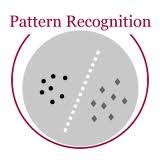It is broadly accepted that there is a "gender gap" in face recognition accuracy, with females having higher false match and false non-match rates. However, relatively little is known about the cause(s) of this gender gap. Even the recent NIST report on demographic effects lists "analyze cause and effect" under "what we did not do". We first demonstrate that female and male hairstyles have important differences that impact face recognition accuracy. In particular, compared to females, male facial hair contributes to creating a greater average difference in appearance between different male faces. We then demonstrate that when the data used to estimate recognition accuracy is balanced across gender for how hairstyles occlude the face, the initially observed gender gap in accuracy largely disappears. We show this result for two different matchers, and analyzing images of Caucasians and of African-Americans. These results suggest that future research on demographic variation in accuracy should include a check for balanced quality of the test data as part of the problem formulation. To promote reproducible research, matchers, attribute classifiers, and datasets used in this research are/will be publicly available.
翻译:人们广泛认为,在面部识别准确性方面存在着“性别差距”,女性的假匹配率和假非匹配率较高。然而,对于这种性别差距的原因,人们相对所知甚少。甚至最近关于人口效应的NIST报告在“我们没有做到的”下列出了“分析原因和影响”。我们首先表明,男女发型存在重大差异,影响面部识别准确性。特别是,与女性相比,男性面部毛发有助于造成不同男性面部的更平均差异。我们然后表明,当用来估计认识准确性的数据在两性间平衡时,最初观察到的性别差异在面部奥秘性上基本消失。我们为两个不同的匹配者展示了这一结果,分析高加索人和非裔美国人的形象。这些结果表明,今后关于准确性变化的研究应包括检查作为问题形成的一部分的测试数据是否平衡质量。为了促进可复制的研究、匹配者、分级者和本研究中使用的数据集将公开提供。





